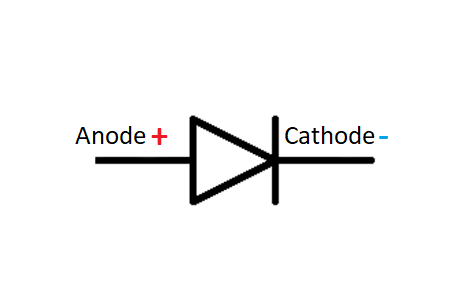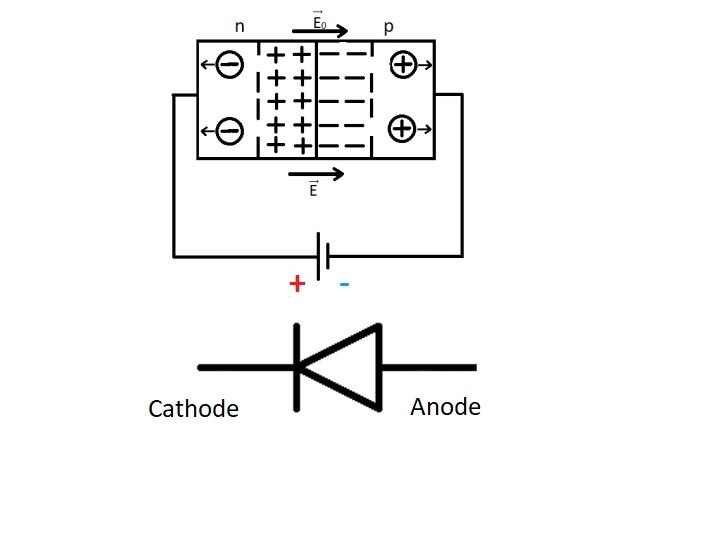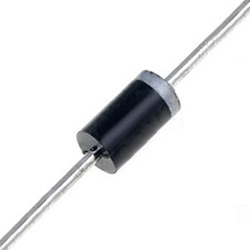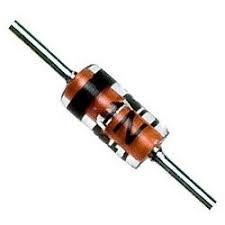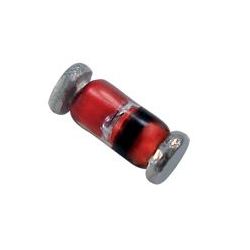Diode is a two-terminal electronic component that has different electrical conductivity depending on the polarity of the applied voltage.
Diodes can be vacuum (rectifiers), gas-filled (gas diodes, ignitrons, corona and glow discharge stabilizers), semiconductor, and so on. Currently, semiconductor diodes are used in the vast majority of cases, so we will focus on them.
A semiconductor diode is an electronic component that has one p-n junction and is designed for rectifying alternating current into pulsating direct current.
A p-n junction is the contact between two semiconductors with different conductivity types.
In general, the mechanism of one-way conductivity in diodes is the same, but it is possible to create it not only using exclusively semiconductors, but also metals. For example, a Schottky diode, unlike ordinary diodes, in which the p-n junction is a semiconductor-semiconductor, the p-n junction of a Schottky diode is made up of a metal-semiconductor.
Diodes have polarity, which is determined by the anode (positive terminal) and cathode (negative terminal). Most often, current flows through the diode only when a positive voltage is applied to the anode.
The conventional graphical symbol for a diode is:
The principle of operation of the diode
A semiconductor diode consists of semiconductor material (silicon or germanium) with one side having p-type conductivity (hole conductivity), which accepts electrons, and the other side having n-type conductivity (electron conductivity), which releases electrons. Contact metal layers are deposited on the outer surfaces, to which wire leads of the diode electrodes are soldered.
When the p-type and n-type semiconductors come into contact, there is mutual diffusion of electrons and holes and their neutralization, which results in the formation of a depletion layer that has a large resistance. In the depletion layer, an electric field E0 is created, directed from n to p, and a contact potential difference (potential barrier) is formed, which limits further diffusion of charge carriers.
Diffusion is the process of mutual penetration of molecules or atoms of one substance among the molecules or atoms of another, which usually leads to the equalization of their concentrations throughout the occupied volume.
Forward biasing of a diode (p-n junction)
If an electric field E is created directed from the p-type to the n-type semiconductor, the resistance of the depletion region decreases, and current begins to flow through the p-n junction. The resistance of the junction decreases and the width of the depletion region narrows. Under forward biasing, the p-n junction is open.
Reverse biasing of a diode (p-n junction)
If an electric field E is created, directed from the n-type to the p-type semiconductor, the direction of the electric field coincides with the internal electric field. The resistance increases, and the depletion region widens.
Volt-Ampere characteristics of a diode (p—n – transition).
Direct branch (direct connection)
- A – The direct electric field is less than the blocking field and the current passing through the p-n junction is insignificant.
- B – As the direct voltage increases, the p-n junction opens up.
Reverse branch (reverse connection)
- D – When the reverse bias is applied, the potential barrier for charge carriers increases. The resulting current increases but will remain constant because the number of minority carriers is limited, and all of them participate in the current transport mechanism – “saturation”.
- E – Further increase in the reverse voltage leads to an increase in the velocity of charge carriers, and their kinetic energy reaches the magnitude of impact ionization of atoms in the p-n junction. As a result, the number of electrons and holes in the p-n junction increases avalanche-like, leading to an increase in current at a constant voltage – this is called the avalanche breakdown of the p-n junction. It has a reverse character
Further increase in current leads to heating up of the crystal, which causes generation of additional charges and leads to thermal breakdown of the p-n junction.
- F – Due to the breakdown of the p-n junction, it is destroyed.
Diode packages
Usually, these are cylindrical packages that can be made of glass or plastic. For example, packages of the DO and R series. The cathode is indicated by a stripe.
There are also diodes for surface mount technology, commonly known as SMD diodes
Bridge rectifiers are in high demand and are commonly used in rectifiers.
